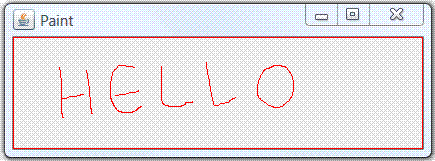

The data type will be GL11.GL_UNSIGNED_BYTE because we’re using a ByteBuffer. Level means the level-of-detail, and higher numbers gives worse detail, so that is 0 as well. The big call to give OpenGL our texture data is: GL11.glTexImage2D(type, level, internalFormat, width, height, border, format, datatype, buffer). The type is something I mentioned earlier – but again we’ll go into it in more detail later. It’s quite similar to a VBO, gen a texture and then bind it using GL11.glGenTextures() and GL11.glBindTexture(type, ID). (We’ll also want to store those values for later) Not only that, but since this is a large amount of Bytes, it’d be a good idea to use a direct ByteBuffer.Īnyway, after decoding the PNG data, we just remember one important thing – to flip the buffer! Now, to set up the texture with OpenGL. There’ll be a number of bytes for each pixel – if we used RGBA, that’d be 4 bytes per pixel.įortunately, PNGDecoder also provides the getWidth() and getHeight() methods, so it’s easy to figure that out. We also have to properly size our ByteBuffer. The stride represents how long one ROW is, so we can use Format’s getNumComponents() method multiplied by the width. Now, the PNGDecoder class provides a method decode(buffer, stride, format). It returns a format which is the closest to what we want. Format is a static nested class within PNGDecoder, but PNGDecoder has a bunch of them describing different formats. An important method call is decideTextureFormat(format). Instantiating it requires an InputStream. The SlickUtils library has the PNGDecoder class, which we can use for this. But before that we have to actually load a texture from a PNG file. The Texture ID as you may guess will be provided when we ask OpenGL for one. We can provide the type, as it’s a GL value. Our class will have to hold two (and more) key pieces of data – the Texture ID and the Texture Type. For this we’ll want a new class, Texture, which can handle the loading and binding of texture data. So there is our list of things to do! We’ll start with loading the texture data from the image file.
JAVA LWJGL OSCELLATING MOTION UPDATE
We have to update our ShaderProgram as well.We have to update the shaders to use the texture.We have to give OpenGL the decoded texture data and bind to it.These coordinates need to be linked to VAO Attribute Lists.Vertices need coordinates for textures: S, T.To use textures, we’ll have to do a few things…

Once we have it setup, let’s first just have a bit of a think about what we have to do to actually draw some Quads with textures. You can set it up in the same manner as the LWJGL.
JAVA LWJGL OSCELLATING MOTION DOWNLOAD
We’ll use the SlickUtils library, which you can download from here. So that’s what we shall be doing now.īut first, so we don’t have to write a bunch of boilerplate code, let’s use a library to do the hard work of decoding image files into data that OpenGL can use. Having coloured quads is nice and all, but generally when we draw stuff, we want to texture it.


 0 kommentar(er)
0 kommentar(er)
